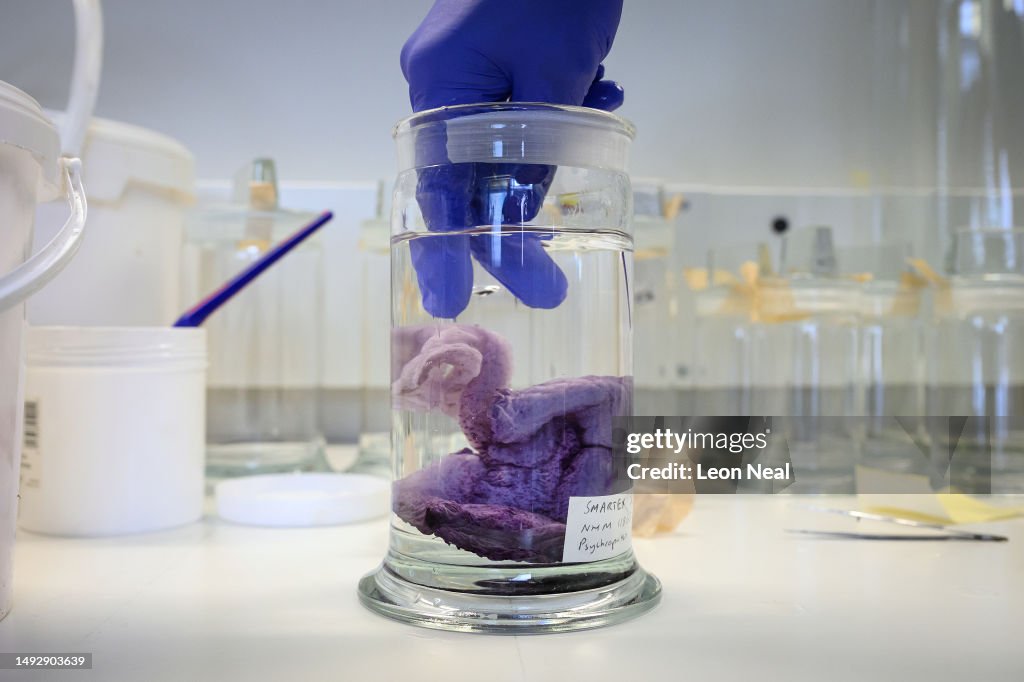Natural History Museum Preserves Deep Sea Arthropods
LONDON, ENGLAND - MAY 24: A Psychropotes Longicauda sea cucumber is seen as it is transferred into an ethanol-filled specimen jar for scientific preservation, in a laboratory within the Natural History Museum on May 24, 2023 in London, England. Collected from the sea bed using a remotely-operated system, researchers have managed to collect thousands of samples of deep sea anthropods, many of which are being seen for the first time. A new study has highlighted the extent of biodiversity in the Clarion-Clipperton Zone, the world’s largest mineral exploration region. The research has found that over 90% of species in one of the most likely future mining sites are currently undescribed by science, and are threatened by deep-sea mining, due to a global surge in demand for metals such as cobalt and nickel. Co-authored by Muriel Rabone, Data Manager & Analyst in the #NHMDeepSea research group, and Merit Researcher Adrian Glover, the paper "How many metazoan species live in the world’s largest mineral exploration region?" is published in Current Biology. (Photo by Leon Neal/Getty Images)

PURCHASE A LICENSE
How can I use this image?
$375.00
USD
Getty ImagesNatural History Museum Preserves Deep Sea Arthropods, News Photo Natural History Museum Preserves Deep Sea Arthropods Get premium, high resolution news photos at Getty ImagesProduct #:1492903639
Natural History Museum Preserves Deep Sea Arthropods Get premium, high resolution news photos at Getty ImagesProduct #:1492903639
 Natural History Museum Preserves Deep Sea Arthropods Get premium, high resolution news photos at Getty ImagesProduct #:1492903639
Natural History Museum Preserves Deep Sea Arthropods Get premium, high resolution news photos at Getty ImagesProduct #:1492903639$499$175
Getty Images
In stockDETAILS
Restrictions:
Contact your local office for all commercial or promotional uses.
Credit:
Editorial #:
1492903639
Collection:
Getty Images News
Date created:
May 24, 2023
Upload date:
License type:
Release info:
Not released. More information
Source:
Getty Images Europe
Object name:
ln8_6066_0kwuqcl3
Max file size:
5278 x 3516 px (17.59 x 11.72 in) - 300 dpi - 10 MB